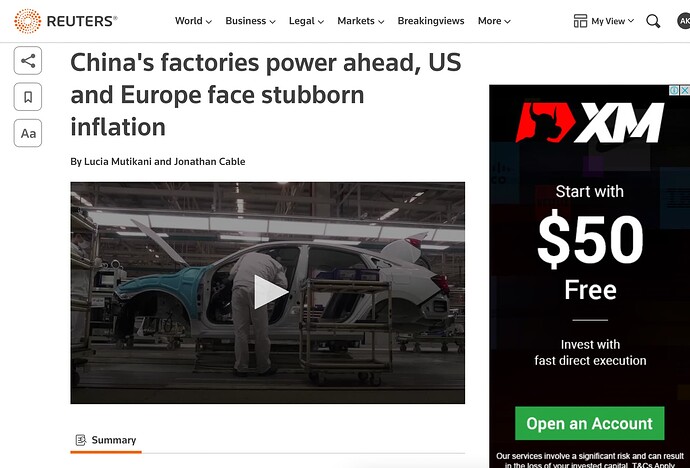-
2月份,中国制造业以十多年来最快的速度增长,其PMI从1月份的50.1攀升至52.6,表明在解除严格的COVID-19抑制措施后出现反弹。
-
私营部门调查也显示七个月来首次出现增长,增加了中国活动正在反弹的证据。
-
亚洲股市上涨,全球油价上涨,表明中国经济强劲复苏,可能通过增加能源需求来推动全球通胀。
-
在美国,2月份制造业连续第四个月萎缩,尽管供应改善,需求疲软,但通货膨胀仍在加剧。
-
ISM调查对制造商支付价格的衡量从1月的44.5反弹到2月的51.3,是9月以来的最高水平,可能预示着通胀率重新面临上升的压力。
-
在欧洲,德国的数据显示,通货膨胀仍有一些路要走,2月份的价格同比增长9.3%,超过了分析师预期的9.0%。
-
本周早些时候,法国和西班牙的物价上涨速度也超过了预期,挑战了该地区通胀已经明显见顶的观点。
-
标普全球的欧元区工厂采购经理人指数从48.8下滑至48.5,但产出指数从48.9攀升至50.1,反映了供应链的广泛改善。
-
在欧元区之外,英国制造业活动在上个月出现萎缩,但速度为7月以来最慢,随着深度衰退的威胁缓解,工厂更加乐观。
-
印度和澳大利亚在截至12月的季度里经济增长放缓,韩国2月份的出口连续第五个月下降,凸显了全球需求放缓对该地区制造商的痛苦。
-
该地区较弱的数据凸显了亚洲决策者所面临的挑战,即如何通过提高利率来控制通货膨胀,同时又不扼杀已经面临全球经济放缓压力的经济复苏。
-
China’s manufacturing sector grew at the fastest pace in over a decade in February, with its PMI climbing to 52.6 from 50.1 in January, indicating a rebound after the lifting of strict COVID-19 curbs.
-
A private sector survey also showed growth for the first time in seven months, adding to evidence that China’s activity is rebounding.
-
Asian stocks rose, and global oil prices went up, indicating a strong Chinese recovery that could fuel global inflation through increased energy demand.
-
In the US, manufacturing contracted for the fourth consecutive month in February, with inflation flaring despite improving supply and softening demand.
-
The ISM survey’s measure of prices paid by manufacturers rebounded to 51.3 in February from 44.5 in January, the highest level since September, potentially signaling renewed upward pressure on inflation.
-
In Europe, German data showed that inflation still has some way to go, with prices rising 9.3% YoY in February, beating analysts’ expectations of a rise of 9.0%.
-
Prices in France and Spain also rose faster than expected earlier this week, challenging the view that inflation in the region had clearly peaked.
-
S&P Global’s headline factory PMI for the euro area slipped to 48.5 from 48.8, but the output index climbed to 50.1 from 48.9, reflecting a broad-based improvement in supply chains.
-
Outside the euro area, British manufacturing activity shrank last month, but at the slowest pace since July, with factories being more optimistic as the threat of a deep recession eases.
-
India and Australia saw economic growth slow in the quarter to December, and South Korea’s exports fell in February for a fifth straight month, highlighting the pain of slowing global demand on the region’s manufacturers.
-
The region’s weaker data underscores the challenge Asian policymakers face in reining in inflation with higher interest rates without choking off economic recoveries already facing pressure from the global economic slowdown.
链接:China's factories power ahead, US and Europe face stubborn inflation | Reuters
